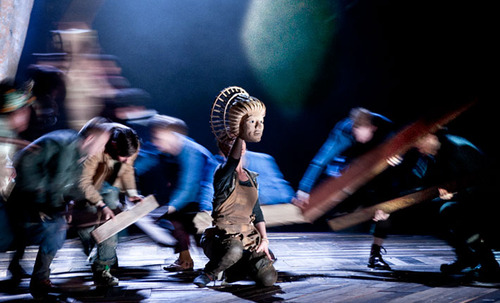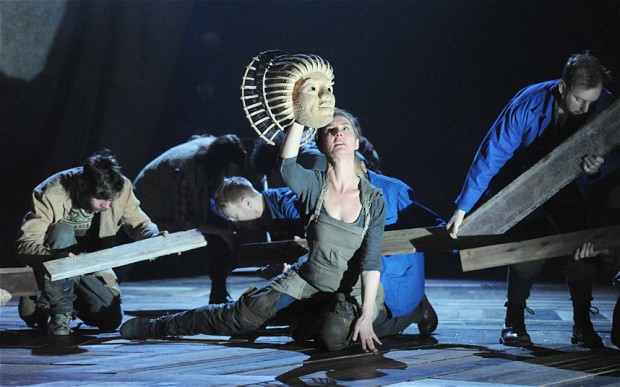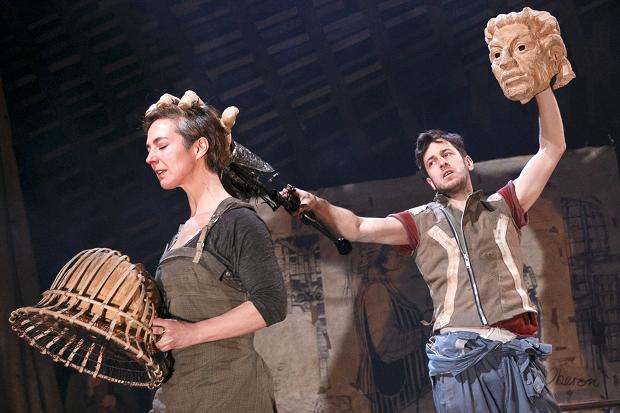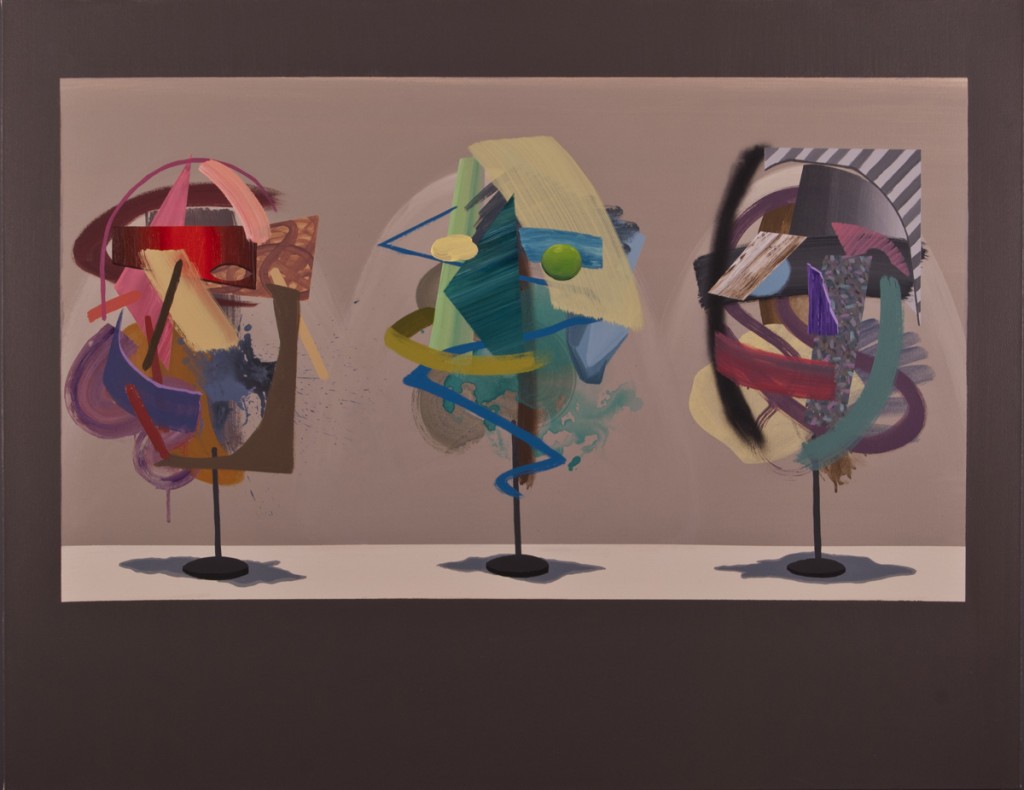Bottom indeed! Okay, wait, I’ll start with the highfalutin’ artistic stuff, then we can deal with the low-brow artistic stiffy.
I will say this; Tom Morris made me cry tonight. He brought tears to my eyes through his sheer mastery of beauty in the moment, the all important moment. Engineers speak of a moment of inertia, or an angular moment. This traces to the Latin word, mÅmentum, meaning motion, cause of motion, influence, importance. MÅmentum shares a variant stem, mÅ, with movÄ“re, to move. To move. Pawn is of the opinion that this is an essential aspect to successful art, and when truly moved, emotion can’t be far behind. So I was brought to tears by beauty.
First, however, the prosaic. X and I arrived in London midday today, delayed a bit by ferocious winds and the continuing floods. Yes, the floods even effected us, as they have weakened tree roots, which when combined with the aforementioned winds, led to many downed trees on the tracks. Oh, and the bum £5 note from Flame, which sent the hack into conniptions of laughter, “There’ve been 14 generations of currency since this thing was printed,” he guffawed, as he handed it back to me, and X scrambled to dig out more, fresher, currency.
Once ensconced in our flat (Owen, the landlord, was a charmer), X repaired to bed for a nap, and I braved the elements, and the slings and arrows of outrageous banking, to stock up on the bare essentials, top-off our Oyster cards, and get some cash. That only took 3 hours!
But the crème-De-la-creme was tonight’s fare, so let’s not waste any more time getting to that. We were lucky enough to book a couple of ace seats — third row centre in stalls — for the final performance of Bristol Old Vic and Handspring Puppets’ production of Shakespeare’s oft produced classic, A Midsummer Night’s Dream, at Barbican Centre.
Reuniting director Tom Morris and Handspring for the first time since their now classic, War Horse, changed how people thought about puppetry (at least changed the minds of those who hadn’t already been paying attention). That production utilized enormous puppet horses (several of them) each with three operators, which breathed life into the title character, Joey a quarter horse pressed into military service, and his comrades. In this production, puppetry makes mortals into gods and imps into comical abstractions, among other things.
Saskia Portway as Hippolyta transforms into her goddess Titania with a large mask and an attentive array of “arms” (think Hindu deity) formed by ensemble with wooden planks, and David Ricardo Pearce as Theseus transforms into Oberon by dint of a similar mask and a single large, muscular arm with articulated hand. Add to this the brilliant abstraction of Puck from a hand basket, paint sprayer, mallet, handsaw and miscellaneous garden implements, and you’ve got the majority of the puppets. Oh, and Titania’s fairies, of course. That’s a scary bunch!
This is a long show, and it relishes both the bawdy humour of Shakespeare’s text, and the languorous pace — clocking in at just under 3 hours (with 1 interval). There is much to like here, but what especially charmed me was the fantastic ensemble work, the reaching back to Indo/Arryan roots for the god figures, and the way that whilst embracing the bawdy, vulgar humour, they’ve treated the gods with reverence and through them brought us a new appreciation for the power of beauty in our lives.
So, an abstract Puck, you ask? Yes, Puck is portrayed with Bunraku puppetry — three puppeteers; one for the torso and head and two for the limbs — but rather than the linked parts of a traditional Bunraku puppet, in this case all the parts are separate. The parts sometimes come together or fly apart, the puppet may swoop or careen about the stage, evoking animated characters so common in film fare these days, but made real by the puppet and the puppeteers. I cannot find an image of this to show you, but it certainly put me in mind of the work of Shane Walsh.
And the bawdy? Well, in the story, Bottom, the self-important I-can-do-it-all actor, is transformed into an ass (think donkey) and Oberon enacts a spell to put Titania in thrall to him. In the twisted mind of Handspring, however, this involves unpanting the actor who plays Bottom and strapping him into a carriage wherein his feet, with floppy socks, are the ears, his arms work cranks which, via elaborate machinery, move the realistic legs, and his buttocks, bared, are the brow of the ass, as it were. Don’t worry, no photos for this. The crowd loved this — shrieks and hilarity.
So what made me cry? It was this; the play as most of us know it ends when the Duke, Theseus, oversees the nuptials of Hermia to Lysander and Helena to Demetrius, but there follows an entire, quite bawdy entertainment by Bottom and his gang. Then, upon the stroke of midnight, Theseus and Hippolyta chase the newlyweds off to their bed chambers. Far upstage are the gods, Titania and Oberon, tall and striking wicker-people with the heads we saw earlier, but now with titanic bodies. As the lights on the stage dim, we become aware that the heads of these immobile statues are moving, they turn towards each other, and we cannot help but feel the tension and passion between them.
The young lovers creep onto the stage, and start to embrace and entwine. The gods move towards us, arms spread and flexing, their essential nature revealed: within them the motive power comes from the actors behind each god’s human counterpart. Their power over their believers is made manifest. But it was that initial moment of movement, that first sign of life in the gods, which is what moved me. With any luck, you too will find beauty in art which will move you this way. It is transcendent.




